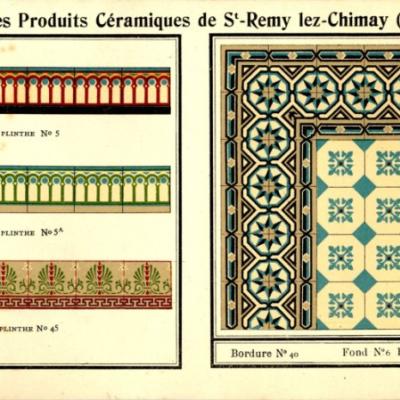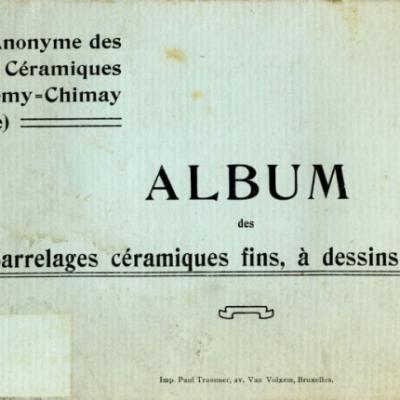c.1906 - Chimay ceramic borders, single or back to back lay - 160 tiles
160 Belgian ceramic encaustic tiles, dating from the early 20th century, manufactured by Societe Anonyme des Produits Ceramiques St Remy-Chimay, we include a scan from their original catalogue showing the tiles.
The tiles can be laid as singles or back-to-back runs.
15cm square and 15mm thick, the tiles have cleaned superbly and arrive ready to relay.
No surface wear, an occasional few displaying small groutable chips and edge nibbles.
A highly fired tile, they can be laid inside or outside of the home and will work very efficiently with under-floor heating systems.
Can be used for framing a modern ceramic or an antique wood parquet floor.
With the possibility to sell by the meterage they can also be used as chimney tile inserts, on a kitchen wall work surface run or as splashback around an antique bath, shower or sinks.
We also have the identical tile by the same manufacturer in the other palette available, as shown in the catalogue scan in the photo gallery. A link to the tiles is here
Being a geometrically pure design border corner pieces can easily be created from these regular borders should you wish to frame an area.
160 tiles for a total linear length of 24 metres for a single lay or 12 metres for a back to back double lay 78.7 ft single lay or 39.4 ft double lay)
NOTE
Antique tiles were most commonly made in single or two tile moulds. Before current computer automation methods their moulds were made my hand and the colour slips mixed by eye. Kiln temperatures could also be variable, as could the firing time. The result is that often tiles display subtle size and thickness variations and there can be tonal variations in colours, owing to the slip mixing and/or firing time. All of this makes these handmade tiles unique and adds to their charm. Some floors display their subtle variations in size and tones, some not, but when photographing we always take a random section of the floor so that it is representative of the whole. A tiler should always dry lay a section of the tiles to familiarise himself with them before starting to fix lay.
CL155 CL175-1






